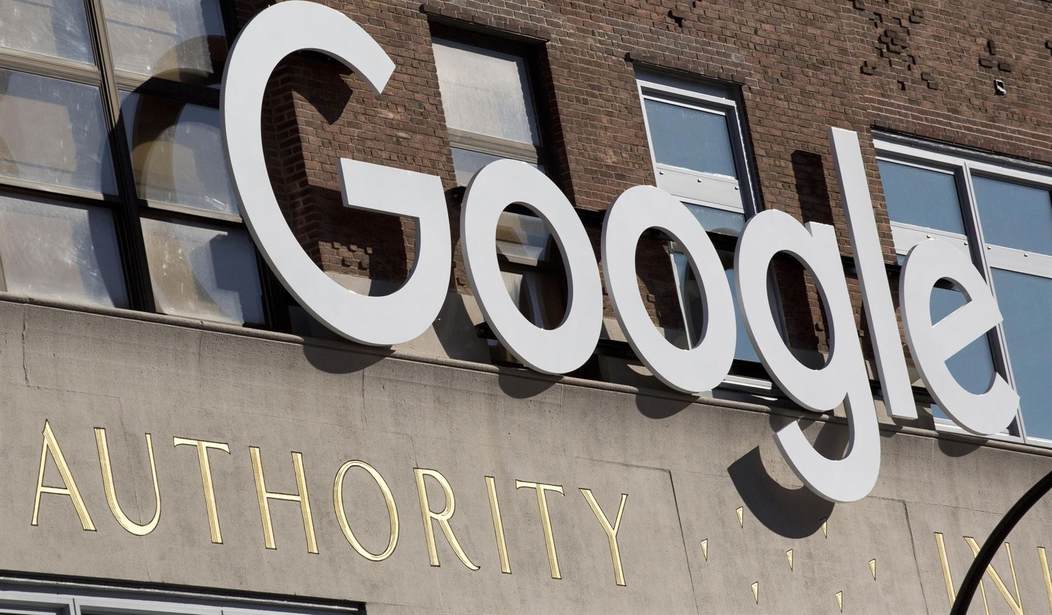This article is the fifth installment of the VICI Report, a comprehensive multi-part series exploring the sophisticated use of technology in political operations. This series aims to uncover the processes, mechanisms, tools, and technologies used by Democrats to master our political processes and to develop strategies that answer and ultimately defeat their manipulations in 2024 and beyond.
Read the previous article in this series, The Big Tech Revolution which describes the political impact of the rise of Big Tech, or start from the beginning of our series.
The 2008 election year marked a pivotal moment in the intersection of technology and politics, fundamentally altering the landscape of both. It was here that Big Tech companies forged a strategic alliance with the Democratic Party, a partnership that would come to have profound and far-reaching consequences. This collaboration was characterized by an unprecedented level of integration between digital tools, data analytics, and political campaigns, providing Democrats exclusively with a significant technological edge.
All of the great Silicon Valley "unicorns," Facebook, Apple, Amazon, and Google, directly and overtly aligned with the Democrat machine, facilitating a degree of collusion that raises serious ethical and legal concerns. This alliance enables sophisticated and unanswerable voter targeting and engagement strategies, leveraging vast amounts of personal data to influence electoral outcomes. The close relationship between Big Tech and the Democrats has not only shifted the dynamics of political campaigns but also threatens the integrity of our republic.
The VANsurgency
In the late 1990s and early 2000s, the Democratic Party faced a significant disadvantage in leveraging data and technology for political activism compared to the Conservative Movement. The GOP's effective use of direct mail and data analytics, particularly during the Monica Lewinsky scandal, showcased their capability to coordinate what Hillary Clinton termed the "Vast Right-Wing Conspiracy." Recognizing this gap, Democrats sought to build a comparable technology-driven network.
NGP Software, founded in 1997, and Voter Activation Network (VAN), established in 2001, emerged as key players in this effort. These companies drew lessons from MoveOn.org, an early adopter of online mobilization and data collection, to develop a more advanced and capable infrastructure. Prior to these developments, the Democrats lacked an equivalent to the GOP's direct action network, relying instead on the Democrat/Union/Mafia complex for issue marshaling. The formation of NGP and VAN marked a strategic shift towards building a robust, technology-driven activist and fundraising network.
In the years leading up to 2008, NGP and VAN honed their craft by working on numerous statewide and national campaigns. These included the presidential campaigns of Howard Dean, John Kerry, John Edwards, and others. The culmination of their efforts was evident when NGP founder Nathaniel Pearlman served as Chief Technology Officer for Hillary Clinton's 2008 campaign. These companies represented the vanguard of Democratic data and technology capabilities, setting the stage for the transformative role they would play in subsequent elections.
The 2008 Obama campaign highlighted the extent of this transformation. Google and Facebook, in a move that was obviously an illegal campaign contribution, provided the Democratic national campaign with full access to their combined social graph, including the provisioning of extensive support staff to manage the relationship. Executives from both companies acted as senior campaign advisors, leveraging their platforms to enhance voter engagement and data analytics on behalf of the Democrats' campaign. This unprecedented level of collaboration underscored the strategic importance of technology in modern political campaigns.
In 2010, NGP Software and VAN merged to form NGP VAN, becoming a cornerstone of Democratic campaign strategies. NGP VAN integrated extensive voter data with digital campaign tactics, providing a comprehensive platform for managing voter outreach, fundraising, event planning, and volunteer coordination. This platform specialized in collecting vast amounts of data, particularly through emails and texts, to support Democratic causes and candidates. By creating detailed voter profiles, NGP VAN enabled campaigns to tailor their messages with precision, ensuring that communications were highly targeted and effective.
NGP VAN's platform has become the common data warehouse for the entire Left, enabling campaigns, leftist non-profits, and even the traditional non-profit ecosystem to share, integrate, and enrich their available data via data warehousing APIs (interfaces for programs and platforms to share data between each other). Many Democrat outreach and campaign tools integrate with VAN for this degree of (likely illegal) collusive data sharing and enrichment. This comprehensive integration has facilitated seamless cooperation and coordination across various progressive organizations, enhancing the overall efficiency and effectiveness of their operations.
“Obamabook” Collusion: Yes! They Did!
The 2008 and 2012 elections marked a revolutionary period in the integration of technology and political campaigns, with the Obama campaign at the forefront of this transformation. Central to these efforts was the collaboration between the Obama campaign and major tech companies like Google and Facebook. This partnership leveraged the extensive capabilities of these platforms to enhance voter engagement and mobilization, fundamentally changing the dynamics of electoral politics.
One of the key tools in this collaboration was Facebook Connect, which allowed the Obama campaign to access and utilize the social network's vast user base. By integrating Facebook Connect, the campaign could easily mobilize voter participation through social networks, encouraging users to share their political activities and endorsements with friends. This social sharing created a ripple effect, significantly amplifying the campaign's reach and impact. The integration of Facebook Connect enabled the campaign to gather valuable data on voter behavior and preferences, which could then be used to craft more targeted and effective strategies.
Similarly, Google's involvement provided the Obama campaign with unparalleled access to search and advertising data. This collaboration allowed the campaign to tailor its messaging with a high degree of precision, reaching voters with personalized ads and content based on their online behavior. The ability to target specific demographics and swing voters with customized messages gave the Obama campaign a significant edge, helping to drive voter turnout and engagement.
However, these partnerships raised serious concerns about the legality and ethics of such data use. Critics argued that the sharing of user data between tech companies and political campaigns constituted an illegal campaign contribution, as it provided the Obama campaign with resources and capabilities far beyond what was available to other candidates. The involvement of tech executives, such as Google's then-CEO Eric Schmidt, as senior campaign advisors further blurred the lines between corporate and political interests, prompting debates about the fairness and transparency of the electoral process.
The controversies surrounding these collaborations underscored the broader issues of privacy and data security. The extensive use of personal data for political purposes highlighted the potential for abuse that would come later and the need for stricter regulations to protect user information. Despite these concerns, the success of the Obama campaign's tech-driven strategies set a new standard for digital political engagement, demonstrating the powerful impact of social media and data analytics in modern elections.
Unicorn Magic: Silicon Valley Pivots to DC
Following the 2008 election, Silicon Valley's political involvement surged, marking a significant shift in the relationship between technology companies and government. Tech giants like Google, Facebook, and Amazon rapidly expanded their presence in Washington, D.C., employing aggressive lobbying tactics and forging direct interactions with political figures. This strategic pivot aimed to influence policy-making in ways that would favor their political biases and business interests.
This period saw a notable increase in the number of high-ranking officials from various sectors, including intelligence and the military, taking executive roles within big tech companies. This revolving door between government and Silicon Valley blurred the lines between public service and private sector interests. Executives with deep political connections brought their expertise and influence to the tech industry, further embedding these companies into the fabric of political power.
The integration of these high-ranking officials into tech companies provided Silicon Valley with a unique strategic advantage. Their insider knowledge and government connections facilitated smoother navigation through regulatory landscapes and enabled more effective lobbying efforts. This alignment of interests often led to favorable policies that bolstered the tech industry's institutional power while simultaneously raising concerns about undue influence and regulatory capture.
The growth of Silicon Valley's influence in policy-making during this period was driven by its technological prowess and strategic interests. Tech companies began to advocate for policies that promoted tighter integration of their technologies into governance while resisting regulations that could hinder their operations. This was the era of the "Unicorn," all those tech startups with greater than $1 Billion in valuation, all led by Facebook, Apple, Amazon, Microsoft, and Google, with a combined value exceeding several trillion $USD.
However, this deepening involvement in politics was not without controversy. The close ties between Big Tech and Big Government compromised regulatory bodies and undermined public trust. The concentration of power within a few tech giants raised concerns about monopolistic practices and the potential for these companies to exert disproportionate control over public discourse and access to information.
Despite these concerns, Silicon Valley's strategic pivot towards greater political involvement has had a lasting impact on both the tech industry and the broader political landscape. By leveraging their technological capabilities and near-bottomless financial gravitas, tech giants have managed to secure a prominent place in the halls of power, shaping policies that affect the entire world.
Stumped by Trump
The 2016 presidential election was a watershed moment for digital political strategy, with Donald Trump’s campaign leveraging digital marketing tactics in unprecedented ways. Trump’s team adopted many of the digital tools and strategies that had been pioneered by Democratic campaigns, but with a unique and subversive twist. The campaign emphasized aggressive use of social media and direct communication with voters, bypassing traditional media gatekeepers and creating a direct line to the electorate.
Trump’s campaign effectively utilized Facebook’s data to target voters with personalized messages. By exploiting the same advertising mechanisms that had been widely available and used extensively by Democrats in prior elections, the campaign was able to deliver highly targeted and tailored messages to specific voter segments. This approach allowed Trump to mobilize support, particularly among disenchanted and previously disengaged voters, driving unprecedented engagement and turnout.
The unexpected victory of Donald Trump prompted a reassessment of digital campaign strategies across the political spectrum. The success of his campaign highlighted the potent influence of social media in modern electoral politics and underscored the importance of data-driven strategies. Political analysts and campaign strategists began to scrutinize the methods used by Trump’s team, seeking to understand how the unconventional use of digital tools had contributed to the election outcome.
Post-election, the near-total emotional meltdown by Democrats brought significant scrutiny and criticism directed at Big Tech companies for their role in political processes. The pervasive use of platforms like Facebook and Twitter during the campaign raised demands for corporate censorship under the guise of "ethical responsibility" to regulate political content. Concerns about "misinformation," data privacy, and the manipulation of public opinion became central topics of debate.
In response to the criticism and the broader political climate, tech platforms began to take more aggressive actions to control the content on their sites. This included the widespread "deplatforming" of voices and content insufficiently opposed to Trump, as well as announcements by Facebook and other social media companies that they would no longer permit "political" (i.e., Republican) access to their social graph data. This response was seen by many as the frenzied culmination of a long-term strategy to influence political outcomes through technological means. The actions of these platforms reflected decades of "long march" indoctrination across various sectors, aiming to shape public discourse and maintain control over the digital narrative.
Conclusion
The strategic alliance between Big Tech and the Democratic Party has revolutionized political operations, showcasing the profound impact of technology on political processes. From the early days of data-driven strategies to the sophisticated, collusive practices that define today's political landscape, this partnership reshapes the mechanics of political engagement.
The transformative impact of platforms like NGP VAN and the leveraging of Big Tech’s gift of Big Data have set new standards for voter targeting and engagement. Understanding these impacts is key to retaking the lead in this technological arms race. Such prowess is critical for the battles ahead.
Sinistra Delenda Est!
In the next installment of the VICI Report series, we explore how the “Long March Through the Institutions” successfully undermined the Tech Industry and led to the current environment of Corporate Activism.
The VICI Report and Project VICI are projects of UpHold America, led by Paul Porter (X:@PaulPorterPVB) and Jason Belich (X:@BelichJason).
The VICI Report series is a culmination of many months of sleepless nights; the product of exhaustive research and analysis into the technologies used in politics by a Democrat adversary excessively skilled at manipulating political outcomes. Your support is critical to the success of this mission. Please visit our website, support our GiveSendGo, or join our Substack to contribute.













Join the conversation as a VIP Member